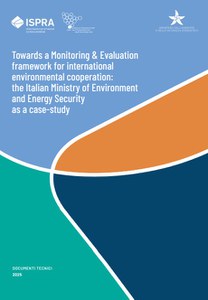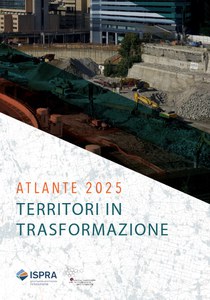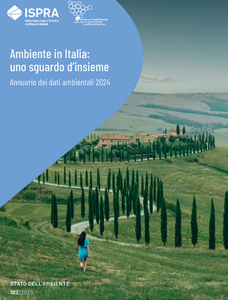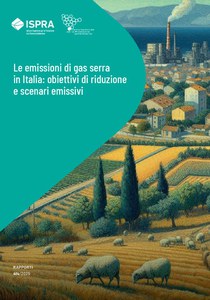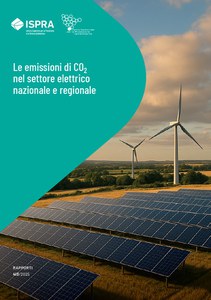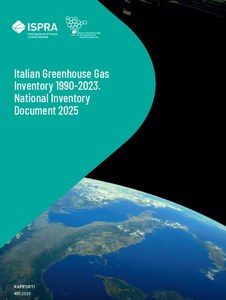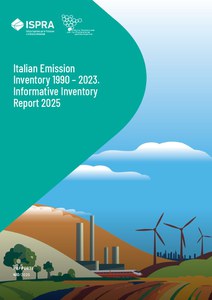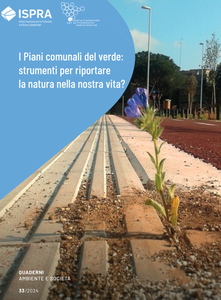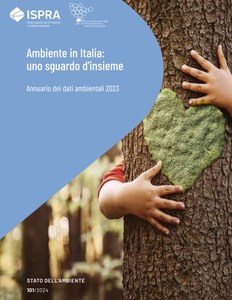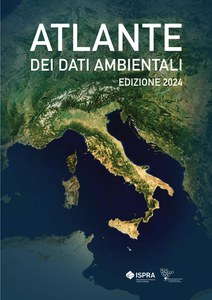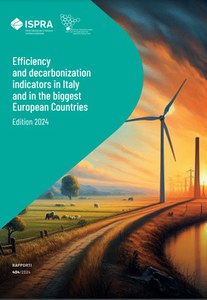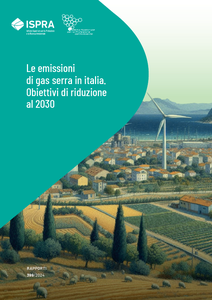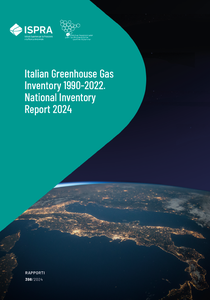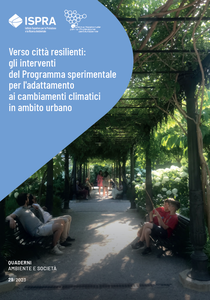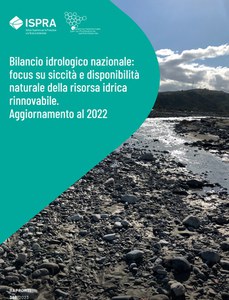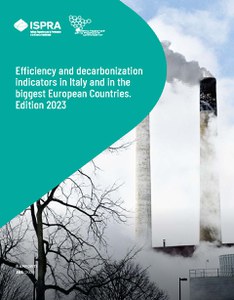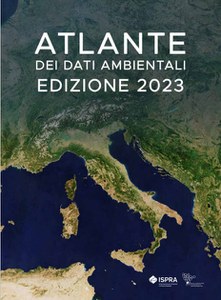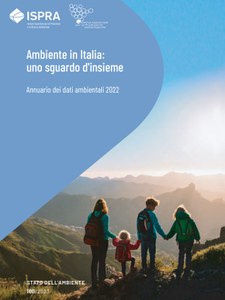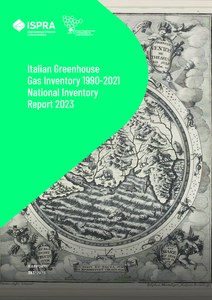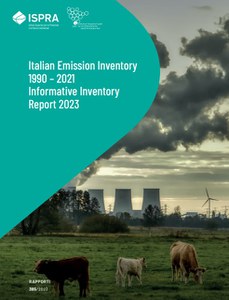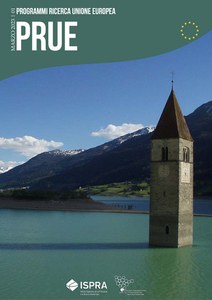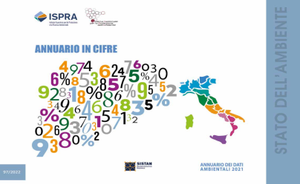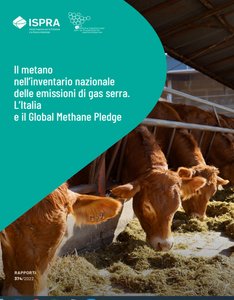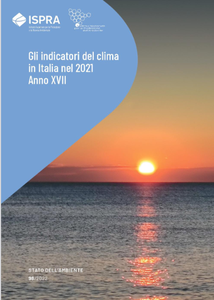Publications
The State of the Environment in Italy 2025: Indicators and Analysis
The report The State of the Environment in Italy 2025: Indicators and Analysis, produced by the Italian Institute for Environmental Protection and Research (ISPRA), provides an updated and integrated overview of the main environmental dynamics in the country. The analysis is based on a selection of indicators drawn from the ISPRA Environmental Indicators Database ( https://indicatoriambientali.isprambiente.it/it ).
Efficiency and decarbonization indicators in Italy and in the biggest European Countries – Edition 2025
National trends of energy and economic indicators have been analysed in relation to greenhouse gas emissions and energy consumption. The analysis of efficiency and decarbonisation indicators at sectoral level was also carried out, with particular attention to sub-sectors of industry. The role of driving factors for GHGs trends has been analyzed, such as economic growth, fossil and renewable energy, transformation efficiency, carbon and energy intensities.
Proceedings of the Conference Days on research and application of ecotoxicological methods. 11th edition " Research and application of ecotoxicological methods: impossible to do without” 26-28 November 2024, Livorno, Chamber of Commerce
The XI Edition of the Conference Days (Livorno 26-28 November 2024) achieved a resounding success, with more than 150 participants (with a remarkable involvement of young researchers) and the submission of 25 oral communications and 18 posters.
Towards a Monitoring & Evaluation framework for international environmental cooperation: the Italian Ministry of Environment and Energy Security as a case-study
The present publication titled "Towards a Monitoring & Evaluation framework for international environmental cooperation: the Italian Ministry of Environment and Energy Security as a case-study", is the result of an operational agreement between ISPRA and the Italian Ministry of Environment and Energy Security (IMEES) signed in 2021.
Atlas 2025. Territories in Transformation
Environment in Italy: An Overview, 2024 Environmental Data Yearbook
Environment in Italy: An Overview, 2024 Environmental Data Yearbook is a statistically significant and scientifically relevant report produced by the Italian Institute for Environmental Protection and Research (ISPRA), in collaboration with regional and autonomous provincial Environmental Protection Agencies, as part of the National System for Environmental Protection (SNPA).
Greenhouse gas emissions in Italy: reduction targets and emission scenarios
The report (in Italian) outlines the Italian emission picture from 1990 to 2023, highlighting current trends and identifying the key factors influencing greenhouse gas emission trends.
CO 2 emissions in the national and regional power sector
The report examines the dynamics of the main parameters of the national power sector in relation to carbon dioxide emissions. The role of the factors that determine the trend of greenhouse gas emissions was analysed: mix of fossil and renewable sources, transformation efficiency and fuel- specific emission factors. Emission factors for greenhouse gases and other air pollutants due to electricity generation were carried out. Moreover, the emission factors for electricity demand are developed.
Italian Greenhouse Gas Inventory 1990-2023. National Inventory Document 2025
The report describes the reporting of emissions of greenhouse gases that Italy officially communicates in accordance with the requirements of the United Nation Convention of Climate Change (UNFCCC), the Paris Agreement and the European Union’s Greenhouse Gas Monitoring Mechanism.
Italian Emission Inventory 1990-2023. Informative Inventory Report 2025
The report describes the reporting of emissions of transboundary substances that Italy officially communicates in accordance with the requirements of the United Nations Economic Commission for Europe Convention on Long Range Transboundary Air Pollution (CRLTAP/UNECE) and relevant Protocols.
Urban nature Plans: tools to bring nature back into our lives?
Environment in Italy: an overview. Environmental Data Yearbook 2023
Environment in Italy: an overview. Environmental Data Yearbook 2023 is a statistical report produced by the Italian Institute for Environmental Protection and Research(ISPRA) in collaboration with the regional and autonomous province environmental protection agencies as part of the National System for Environmental Protection (SNPA).
Atlas of Environmental Data. Edition 2024
The Atlas of environmental data, a volume that ISPRA publishes in this new edition, which offers an overview and a selection of the main environmental data in Italy. It provides cartographic representations that show the distribution of the main environmental information on the territory which, together with graphs, tables and texts, illustrate the situation of our country.
Efficiency and decarbonization indicators in Italy and in the biggest European Countries – Edition 2024
National trends of energy and economic indicators have been analysed in relation to greenhouse gas emissions and energy consumption
Italian Emission Inventory 1990-2022. Informative Inventory Report 2024
The report describes the reporting of emissions of transboundary substances that Italy officially communicates in accordance with the requirements of the United Nations Economic Commission for Europe Convention on Long Range Transboundary Air Pollution (CRLTAP/UNECE) and relevant Protocols.
Greenhouse gas emissions in Italy. Reduction targets for 2030
The report describes the greenhouse gas emissions and removals in Italy, based on the data officially transmitted in accordance with the provisions of the United Nations Framework Convention on Climate Change (UNFCCC), and the Governance of the Energy Union and Climate Action of the European Union.
Italian Greenhouse Gas Inventory 1990-2022. National Inventory Report 2024
The report describes the reporting of emissions of greenhouse gases that Italy officially communicates in accordance with the requirements of the United Nation Convention of Climate Change (UNFCCC), and the European Union’s Greenhouse Gas Monitoring Mechanism.
Towards resilient cities: the interventions of the experimental Program for adaptation to climate change in urban areas
This Booklet offers an overview of the actions proposed by the Italian municipalities participating in the experimental program of interventions for adaptation to climate change in urban areas, launched in 2021 by the Ministry of Ecological Transition (now the Ministry for the Environment and Energy Security), in collaboration with ISPRA and ANCI.
ITALY and ENVIRONMENT: Status, Prospects and Scenarios
The new ISPRA report offers citizens, technicians, researchers, observers, and policy makers an accurate analysis of the state of the environment in Italy, considering the main European economic-environmental strategies (Green Deal, 8 th EAP).
Nationwide hydrological water budget: focus on drought and natural availability of renewable water resources. Update to 2022.
Efficiency and decarbonization indicators in Italy and in the biggest European Countries – Edition 2023
National trends of energy and economic indicators have been analysed in relation to greenhouse gas emissions and energy consumption. Particular attention was paid to the power sector, one of the main players in the national energy system. The role of driving factors for GHG emission trends has been analyzed, such as economic growth, fossil and renewable energy, transformation efficiency, carbon and energy intensities. Regarding power sector, the emission factors of greenhouse gases have been elaborated. Efficiency and decarbonization indicators have been compared in Italy and in the biggest European Countries. The power sector performances of main European countries have been compared for fuel mixes, transformation efficiencies, and GHG emission factors.
Atlas of Environmental Data. 2023 edition
The Atlas of environmental data, a volume that ISPRA publishes for the first time, offers an overview of the main environmental data. It provides cartographic representations showing the spatial distribution of the main environmental information which, together with graphs, tables and texts, illustrate the state of the entire national territory.
Environment in Italy: an overview. Environmental Data Yearbook 2022
Environment in Italy: an overview. Environmental Data Yearbook 2022 is a statistical report produced by ISPRA with the aim of providing policy makers, public administrators, technicians and citizens with official information on the state of the environment in our country.
Italian Greenhouse Gas Inventory 1990-2021. National Inventory Report 2023
The report describes the reporting of emissions of greenhouse gases that Italy officially communicates in accordance with the requirements of the United Nation Convention of Climate Change (UNFCCC), the Kyoto Protocol, and the European Union’s Greenhouse Gas Monitoring Mechanism.
Italian Greenhouse Gas Emissions: emissions reduction target and scenarios
The report describes the greenhouse gas emissions and removals in Italy, based on the data officially transmitted in accordance with the provisions of the United Nations Framework Convention on Climate Change (UNFCCC), and the Mechanism of Greenhouse Gas Monitoring of the European Union.
Italian Emission Inventory 1990-2021. Informative Inventory Report 2023
The report describes the reporting of emissions of transboundary substances that Italy officially communicates in accordance with the requirements of the United Nations Economic Commission for Europe Convention on Long Range Transboundary Air Pollution (CRLTAP/UNECE) and relevant Protocols.
Bulletin on research funding
COP15: historical global deal for nature and people
The Yearbook in figures
Environmental Data Yearbook 2021
Methane in the Italian greenhouse gas Inventory L’Italia e il Global Methane Pledge
Climate indicators in Italy 2021 - Edition XVII
The 17th report "Gli Indicatori del Clima in Italia" describes the Italian climate in the year 2021 and updates the estimate of climate variations in the last few decades. It is based on climate data, indices and indicators derived from the "National System for the collection, processing and dissemination of climate data" (SCIA, www.scia.isprambiente.it ) developed by ISPRA in collaboration with National System of Environmental Protection national and regional meteorological monitoring networks.




